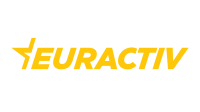Europe's AI Gambit: Regulation vs Innovation
🚀 EU launches AI Act: innovation stifled or future safeguarded? 🤖 Tech giants vs regulators in a global chess match. Can Europe win the AI challenge? #AIAct #InnovationEU
In the labyrinthine corridors of Brussels, a high-stakes game is unfolding. The European Union, ever the eager regulator, has thrust its latest creation onto the global stage: the AI Act. Touted as the world’s first comprehensive AI law, it has ignited a firestorm of debate that threatens to engulf the continent’s tech ambitions.
On one side of the chessboard sit the tech titans—Meta, Google, Spotify—their pieces poised for rapid expansion. On the other, the EU’s regulatory pawns advance steadily, threatening to box in the most dynamic moves of the AI revolution. The central question looms large: Is Europe strangling innovation in its crib, or craftily constructing guardrails for a perilous digital future?
The Regulatory Gambit
The AI Act’s ambitious scope has sent shockwaves through Silicon Valley and beyond. Tech giants argue that its interplay with the already-stringent General Data Protection Regulation (GDPR) could hobble AI development on the continent. Their concerns are not unfounded; the Draghi Report paints a sobering picture of a Europe at risk of being left in the dust of the global AI race. Yet, viewed through a Kantian lens, the EU’s strategy takes on a different hue. Immanuel Kant’s vision of “Perpetual Peace” argued that while competition drives progress, unchecked rivalry often tramples the weak. The AI Act can be seen as an attempt to referee this high-tech contest, ensuring a level playing field where innovation doesn’t come at the cost of societal well-being.
The Rawlsian Gamble
John Rawls’ “veil of ignorance” thought experiment provides a compelling framework for this regulatory approach. Imagine policymakers designing AI rules without knowing their future position—tech mogul or average citizen affected by AI decisions. This perspective encourages regulations that benefit all, not just the powerful. While in the short run big competitors might be advantaged by lighter regulations, in Europe has invested in the long run, and for a social innovation that could benefit all.
However, while Europe deliberates, the rest of the world sprints ahead. The United States and China are pouring resources into AI development, unencumbered by similar regulatory handcuffs and attracting capital investment. Recognizing this, the European Commission has belatedly launched initiatives to support AI startups and SMEs, a tacit admission that innovation must be fostered alongside regulation.
A Global Endgame
The EU’s regulatory gambit, contentious as it is, may yet prove prescient. As AI systems grow more potent, capable of reshaping both physical and virtual realms, the need for global standards becomes increasingly apparent. The United Nations’ call for an AI oversight body akin to the IPCC for climate change signals a growing recognition of AI’s world-altering potential.
Europe stands at a crossroads, its AI Act a bold opening move in a game with global stakes. The challenge now is to navigate between the Scylla of stifling regulation and the Charybdis of unchecked technological advance. As the world watches, the question remains: can Europe thread this needle, fostering innovation while safeguarding its values?
The answer may well determine not just the future of the continent, but the shape of the global digital landscape for generations to come. In this high-stakes match, Europe must find a way to protect its pawns without sacrificing its queens. The clock is ticking, and the next move is Europe’s.













